Théo Trouillon
Knowledge Graph Completion via Complex Tensor Factorization
Nov 26, 2017
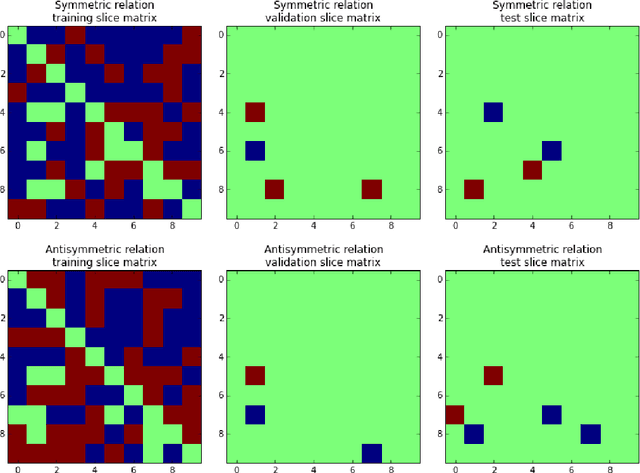

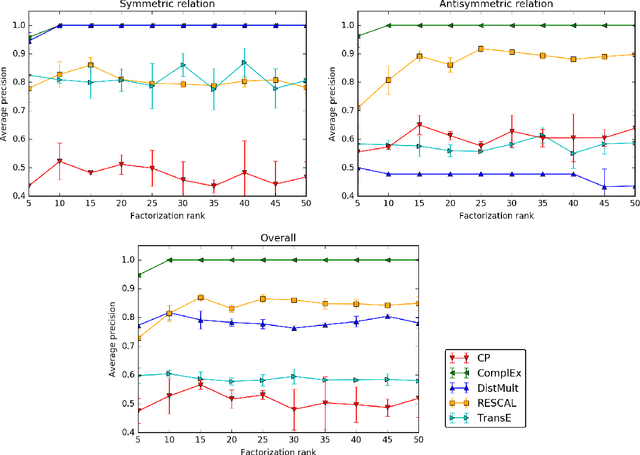
Abstract:In statistical relational learning, knowledge graph completion deals with automatically understanding the structure of large knowledge graphs---labeled directed graphs---and predicting missing relationships---labeled edges. State-of-the-art embedding models propose different trade-offs between modeling expressiveness, and time and space complexity. We reconcile both expressiveness and complexity through the use of complex-valued embeddings and explore the link between such complex-valued embeddings and unitary diagonalization. We corroborate our approach theoretically and show that all real square matrices---thus all possible relation/adjacency matrices---are the real part of some unitarily diagonalizable matrix. This results opens the door to a lot of other applications of square matrices factorization. Our approach based on complex embeddings is arguably simple, as it only involves a Hermitian dot product, the complex counterpart of the standard dot product between real vectors, whereas other methods resort to more and more complicated composition functions to increase their expressiveness. The proposed complex embeddings are scalable to large data sets as it remains linear in both space and time, while consistently outperforming alternative approaches on standard link prediction benchmarks.
On Inductive Abilities of Latent Factor Models for Relational Learning
Sep 17, 2017


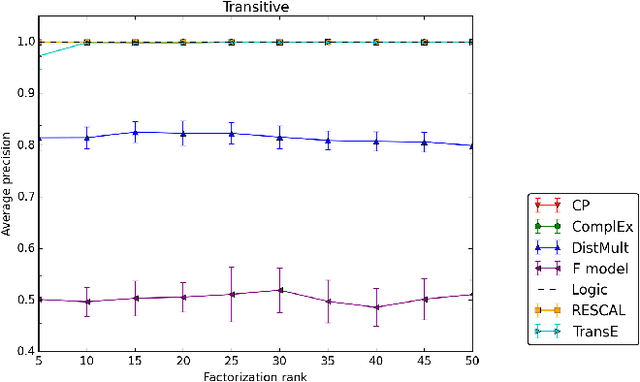
Abstract:Latent factor models are increasingly popular for modeling multi-relational knowledge graphs. By their vectorial nature, it is not only hard to interpret why this class of models works so well, but also to understand where they fail and how they might be improved. We conduct an experimental survey of state-of-the-art models, not towards a purely comparative end, but as a means to get insight about their inductive abilities. To assess the strengths and weaknesses of each model, we create simple tasks that exhibit first, atomic properties of binary relations, and then, common inter-relational inference through synthetic genealogies. Based on these experimental results, we propose new research directions to improve on existing models.
Complex and Holographic Embeddings of Knowledge Graphs: A Comparison
Jul 23, 2017

Abstract:Embeddings of knowledge graphs have received significant attention due to their excellent performance for tasks like link prediction and entity resolution. In this short paper, we are providing a comparison of two state-of-the-art knowledge graph embeddings for which their equivalence has recently been established, i.e., ComplEx and HolE [Nickel, Rosasco, and Poggio, 2016; Trouillon et al., 2016; Hayashi and Shimbo, 2017]. First, we briefly review both models and discuss how their scoring functions are equivalent. We then analyze the discrepancy of results reported in the original articles, and show experimentally that they are likely due to the use of different loss functions. In further experiments, we evaluate the ability of both models to embed symmetric and antisymmetric patterns. Finally, we discuss advantages and disadvantages of both models and under which conditions one would be preferable to the other.
Complex Embeddings for Simple Link Prediction
Jun 20, 2016
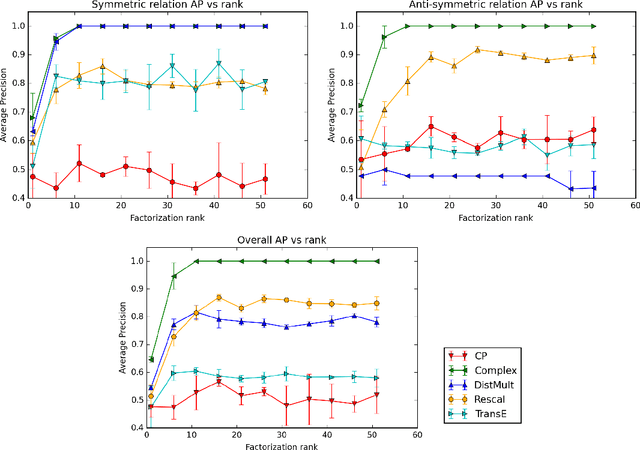
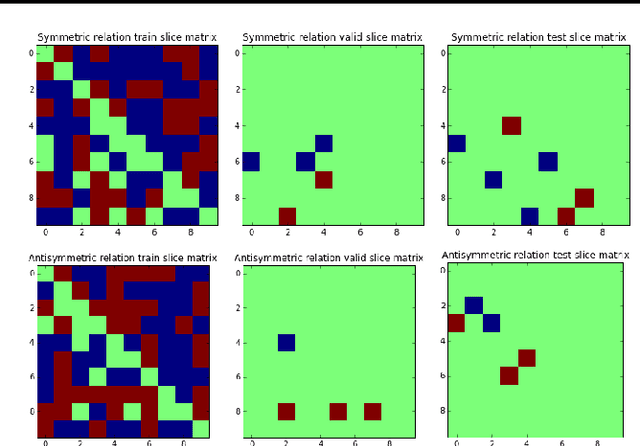

Abstract:In statistical relational learning, the link prediction problem is key to automatically understand the structure of large knowledge bases. As in previous studies, we propose to solve this problem through latent factorization. However, here we make use of complex valued embeddings. The composition of complex embeddings can handle a large variety of binary relations, among them symmetric and antisymmetric relations. Compared to state-of-the-art models such as Neural Tensor Network and Holographic Embeddings, our approach based on complex embeddings is arguably simpler, as it only uses the Hermitian dot product, the complex counterpart of the standard dot product between real vectors. Our approach is scalable to large datasets as it remains linear in both space and time, while consistently outperforming alternative approaches on standard link prediction benchmarks.
Online Learning to Sample
Mar 15, 2016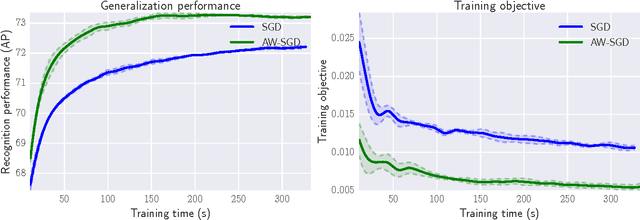
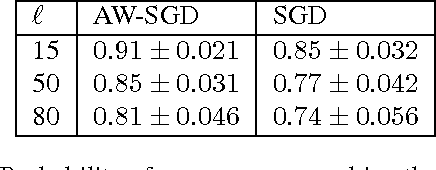
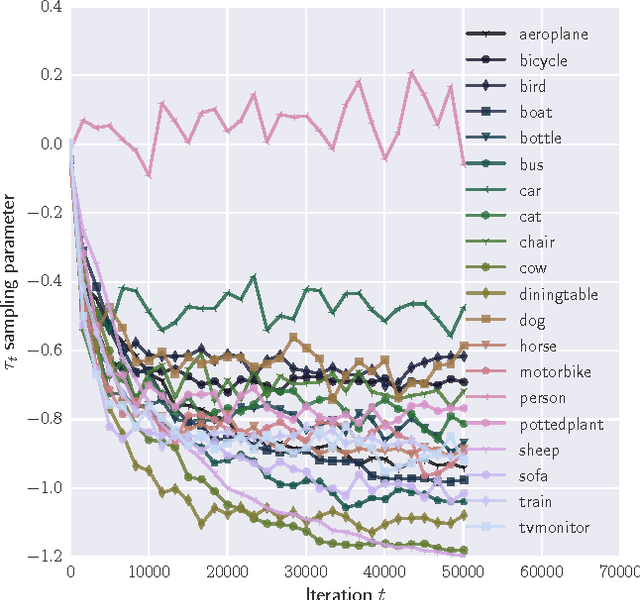
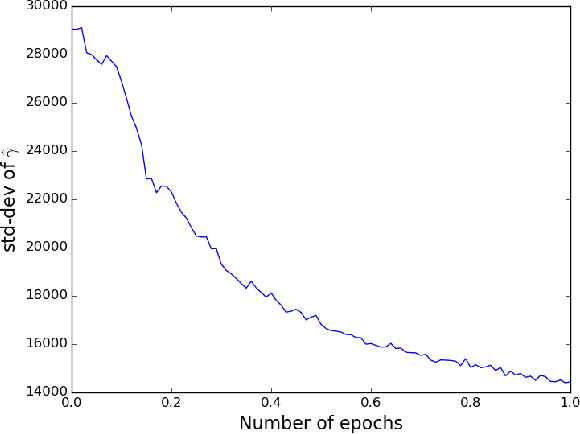
Abstract:Stochastic Gradient Descent (SGD) is one of the most widely used techniques for online optimization in machine learning. In this work, we accelerate SGD by adaptively learning how to sample the most useful training examples at each time step. First, we show that SGD can be used to learn the best possible sampling distribution of an importance sampling estimator. Second, we show that the sampling distribution of an SGD algorithm can be estimated online by incrementally minimizing the variance of the gradient. The resulting algorithm - called Adaptive Weighted SGD (AW-SGD) - maintains a set of parameters to optimize, as well as a set of parameters to sample learning examples. We show that AWSGD yields faster convergence in three different applications: (i) image classification with deep features, where the sampling of images depends on their labels, (ii) matrix factorization, where rows and columns are not sampled uniformly, and (iii) reinforcement learning, where the optimized and exploration policies are estimated at the same time, where our approach corresponds to an off-policy gradient algorithm.
 Add to Chrome
Add to Chrome Add to Firefox
Add to Firefox Add to Edge
Add to Edge